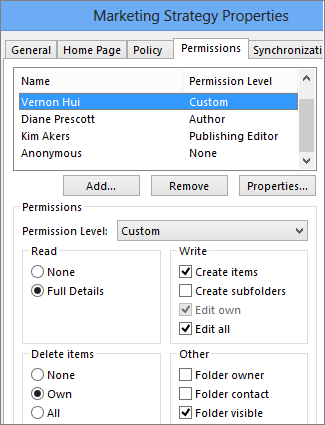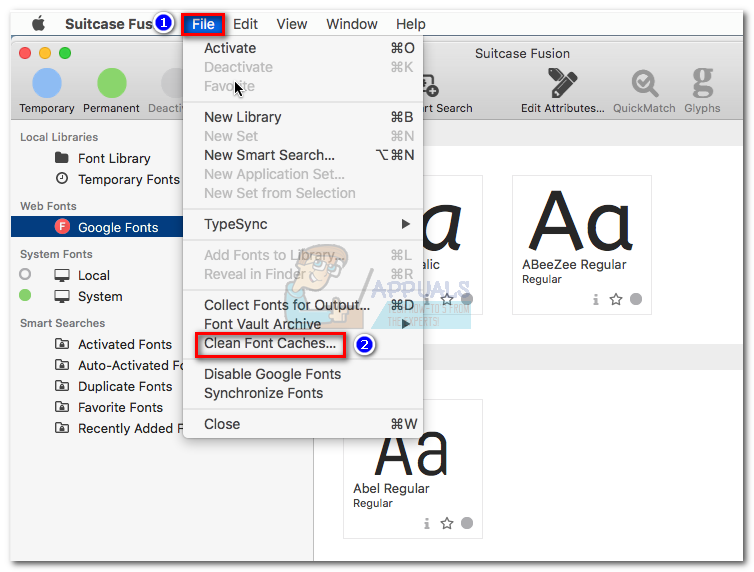Description: Uploading a PowerPoint file to a classic Collaborate session on a Mac with Office 2016 installed prompts the user to grant permissions to the file in a temporary /var/folders/ location on the Mac. A Grant File Access window is displayed with the message 'Additional permissions are required to access the following files: /var. In some cases, you might want to create a Windows Active Directory security group and grant access to a library or list for all the people in the Windows security group. For example, you might want to grant your whole team access to a list by adding the team security group to a SharePoint group. By using this command, we can grant people access while removing their ability to edit, copy or print. We can either select Unrestricted Access, Restricted Access, Confidential and Confidential View Only. Once selected, the Permissions dialog box will appear as shown below where we do all the necessary adjustments. The 'Outlook File Access Denied' problem appeared when I was trying to open or import an Outlook.PST data file in Outlook 2016: 'File Access denied. You do not have the permissions required to access the file C: Users Username Documents Outlook-Data-File.PST'.
Problems with Apple’s sandbox requirements in Mac Office 2016 and higher with VBA code
In Windows Excel 97-and higher and in Mac Excel 2011 you can open files or save files where you want in almost every folder on your system without warnings or requests for permission. But in Mac Office 2016 and higher Microsoft have to deal with Apple’s sandbox requirements. When you use VBA in Mac Excel 2016 or higher that Save or Open files you will notice that it is possible that it will ask you permission to access the file or folder (Grant File Access Prompt), this is because of Apple’s sandbox requirements.This means that when you want to save/open files or check if it exists with VBA code the first time you will be prompted to allow access on the first attempt to access such a folder or file.
How to avoid problems

There are a few places on your Mac that you can use to avoid the prompts and let your code do what it needs to do without user interaction. But these folders are not in a place that a user can easily find so below are some steps that I hope to make it easier for you to access the folder manual if you want.
This is the Root folder on my machine that we use in the examples on this page:
/Users/rondebruin/Library/Group Containers/UBF8T346G9.Office
Note: rondebruin is the user name in this path and I agree that the naming of the folder for Office(UBF8T346G9.Office) is not so nice, but Microsoft must use that of Apple.
I not use this location on this example page to be sure that every Office program can access my files if this is needed. To get this Excel path you can also use Environ('HOME') or Environ('CFFIXED_USER_HOME')
Manual create a folder for your Excel files in the Office folder
- Open a Finder Window
- Hold the Alt key when you press on Go in the Finder menu bar
- Click on Library
- Open the Group Containers folder
- Open the UBF8T346G9.Office folder
- Create a Folder inside this folder named MyExcelFolder for example
- Select this folder
This are three ways to easily open the folder manual :
- Add it to your Favorites in Finder by dragging it to it.
- Add it to your Favorites in Finder with the shortcut : cmd Ctrl T
- Drag the folder to the Desktop with the CMD and Alt key down. You now have a link(alias) to the folder on your desktop so it is easy to find it and open it in the future.
Note : Adding the folder to your Favorites is my favorite because you see the folder in your open and save dialogs in Excel.
Or use this script one time to create a folder for your Office files and create shortcuts to a few important folders, check out this page : Setup your Mac for Mac Office 2016 or higher
How to create a Folder in the Office folder with VBA code
Below you find a macro and a function that you can use to create a folder if it not exists in the Root folder named : UBF8T346G9.Office
In the macro you see one line that call the function and the argument is the name of the folder that you want to create if it not exists. Change 'MyProject' to something else to create another folder.
How do I open files with VBA code in my folder ?
Below you find a macro and a function that you can use to open a file in one of the sub folders of the UBF8T346G9.Office folder. In the macro you see one line that call the function and there are two arguments :
- Name of the sub folder
- Name of the file

Note : You can also add code in the macro to test if the file is already open, I use that also in the code example in this section : Browse to a file or files in a sub folder of the Office folder.
How do I Save a file with VBA code in my folder ?
The first macro create a file of only the activesheet and save it in a folder named: ProjectName and the second macro save a copy of the file in a folder named Backup. Both are sub folders of your UBF8T346G9.Office folder. Be sure you update your Mac Office install so it is 16.9 or higher.
Note : Both macros use the custum function CreateFolderinMacOffice that you find in the first section of this page.
Browse to a file or files in a sub folder of the Office folder
In the example below it opens a browse dialog with a folder folder named : MyExcelFolder from your UBF8T346G9.Office folderand you are only able to select xlsx files. Below the macro you find a list of format names and you can read how you can change it. Note: Do not forget to copy the bIsBookOpen function in your module, you find it below the macro.
Other file formats :
In the macro you see this code line that say which file format you can select (xlsx).
FileFormat = '{'org.openxmlformats.spreadsheetml.sheet'}'
If you want more then one format you can use this to be able to also select xls files.
FileFormat = '{'org.openxmlformats.spreadsheetml.sheet','com.microsoft.Excel.xls'}'
This is a list of a few formats that you can use :
xls : com.microsoft.Excel.xls
xlsx : org.openxmlformats.spreadsheetml.sheet
xlsm : org.openxmlformats.spreadsheetml.sheet.macroenabled
xlsb : com.microsoft.Excel.sheet.binary.macroenabled
csv : public.comma-separated-values-text
doc : com.microsoft.word.doc
docx : org.openxmlformats.wordprocessingml.document
Office 2016 Grant File Access Word
docm : org.openxmlformats.wordprocessingml.document.macroenabled
ppt : com.microsoft.powerpoint.ppt
pptx : org.openxmlformats.presentationml.presentation
pptm : org.openxmlformats.presentationml.presentation.macroenabled
Ms Office 2016 Download File
txt : public.plain-text

More information

See this page for more information about selecting files in Excel 2011 and Excel 2016 and higher
See this page for more information about the file format numbers
FileFormat numbers in Mac Excel
Where is Security feature in Microsoft Access 2007, 2010, 2013, 2016, 2019 and 365?
How to Bring Back Classic Menus and Toolbars to Office 2007, 2010, 2013, 2016, 2019 and 365? |
It is very easy to apply security feature if you have Classic Menu for Office
Although the user interface changed into Ribbon, Classic Menu for Office can help you restore the familiar classic menu interface of Office 2003/XP(2002)/2000. If you have installed Classic Menu for Office on your computer, you can apply the security feature very easily just like in Access 2003/XP(2002)/2000:
- Click the Insert drop down menu in main menus;
- Then you will view the Security item. You are entitled to encrypting database with passwords and administrating workgroup.
Figure 1: Apply Security feature from Classic Menu
Apply Security feature in Ribbon if you do not have Classic Menu for Office
The security functionality seems hidden in Access 2007/2010/2013/2016/2019 Ribbon. In fact Microsoft Access 2007, 2010, 2013, 2016, 2019 and 365 riches the security functionalities, helps make your data and your computer more secure. It is moved into Access Options window:
- Click the Office button at upper-left corner in Access 2007 (or File tab in Access 2010/2013);
- Click the Access Options button;
- Now you have entered the Access Option window, go on to click the Trust Center button at the left bar;
- Now you will view the original Security functionalities listing at the right: Protecting your privacy, Security & More, and Microsoft Office Access Trust Center.
Figure 2: Apply Security feature in Ribbon
Classic Menu for Office
Frustrated by endless searches for commands on the ribbon interface of Access? The Classic Menu for Office brings back the familiar menus and toolbars to Microsoft Access 2007, 2010, 2013, 2016, 2019 and 365. The classic view allows you to work with Office 2010/2013/2016 as if it were Office 2003/2002/2000.
- All new features and commands for Access 2007, 2010, 2013, 2016, 2019 and 365 have been added to the menus and toolbars.
- You can still enjoy many features of Access 2003 that have been removed from Access 2007, 2010, 2013, 2016, 2019 and 365.
- You won't need any training or tutorials after upgrading to Microsoft Access 2007, 2010 or 2013.
Classic Menu for OfficeIt includes Classic Menu for Word, Excel, PowerPoint, Access, Outlook, Publisher, InfoPath, Visio and Project 2010, 2013, 2016, 2019 and 365. |
Classic Menu for Office 2007It includes Classic Menu for Word, Excel, PowerPoint, Access and Outlook 2007. |
